How to Get Started in Oil Painting
This Post May Contain Affiliate Links. Please Read Our Disclosure PolicyCurious about oil painting but not sure where to start? I’ve got you covered. In this guide, I’ll walk you through the initial steps of diving into oil painting, sharing both the triumphs and challenges I’ve encountered along my artistic path. My goal is to equip and motivate you as you embark on your creative adventure.
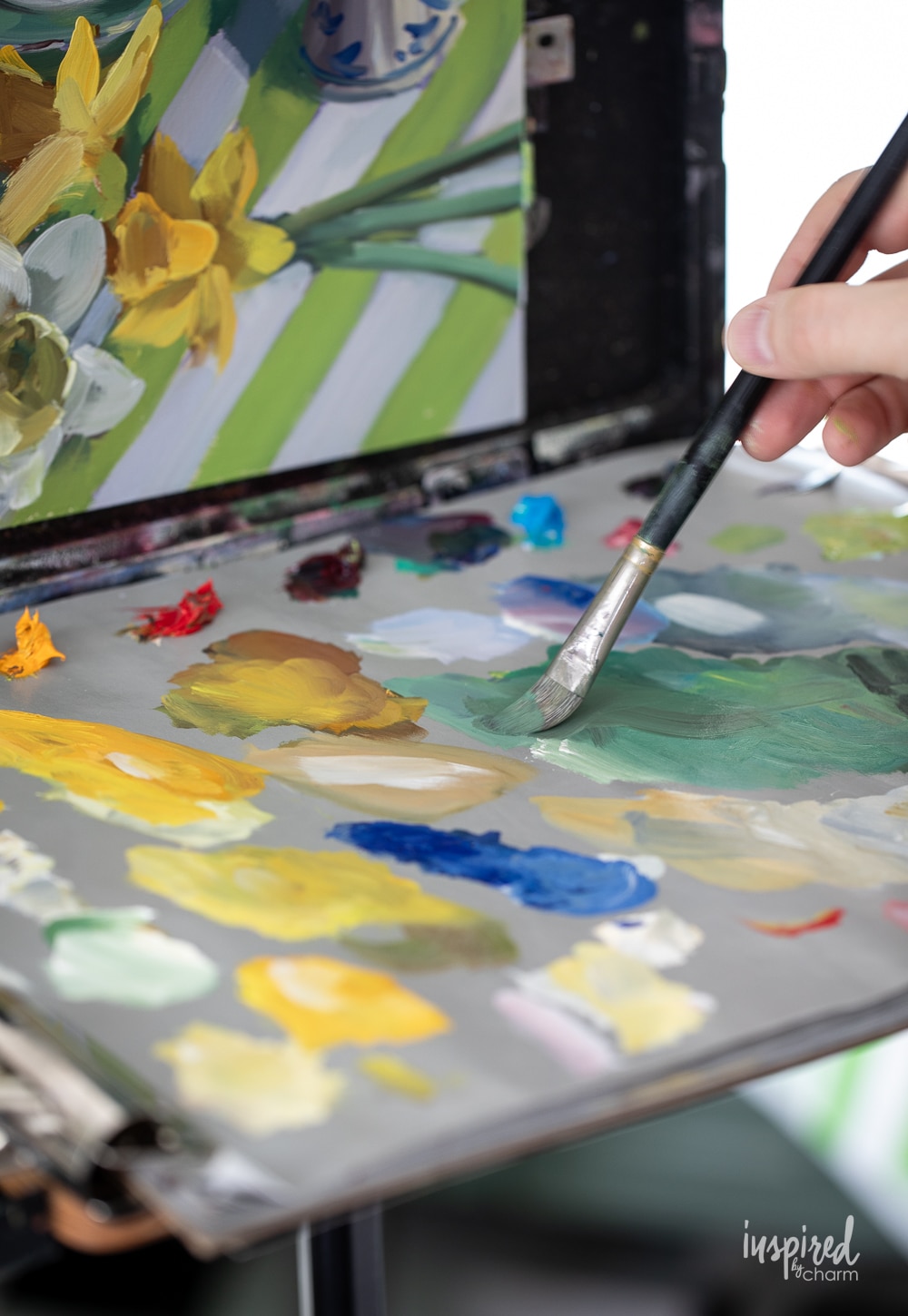
Many of you have reached out with questions about venturing into the world of oil painting. Given the complexity of the topic, I’ve decided to consolidate my advice into this comprehensive guide.
If you’re here, it’s likely because you feel the pull to start this journey where you’ll dip your brush into not just paint but possibility. Whether you’ve been nurturing a quiet fascination with art or you’re ready to transform a dream into strokes of reality, this guide is your first step.
This post is not intended as an instructional type of guide, so I’m not going to get into the “hows” of painting, color theory, techniques, exercises, clean-up, etc. However, I did include some resources on where you can find that information. I would love to offer some courses and lessons, but I’m still in the early phases of my art journey and want to have a little more experience under my belt before I instruct.
The pathway I outline here is based on my personal art journey. It’s not the only route, but I hope it serves as a helpful starting point for you. Take from it what aligns with your aspirations and resources. Want a closer look at my art practice with a behind-the-scenes look at what I’m creating? Then join me on Instagram!
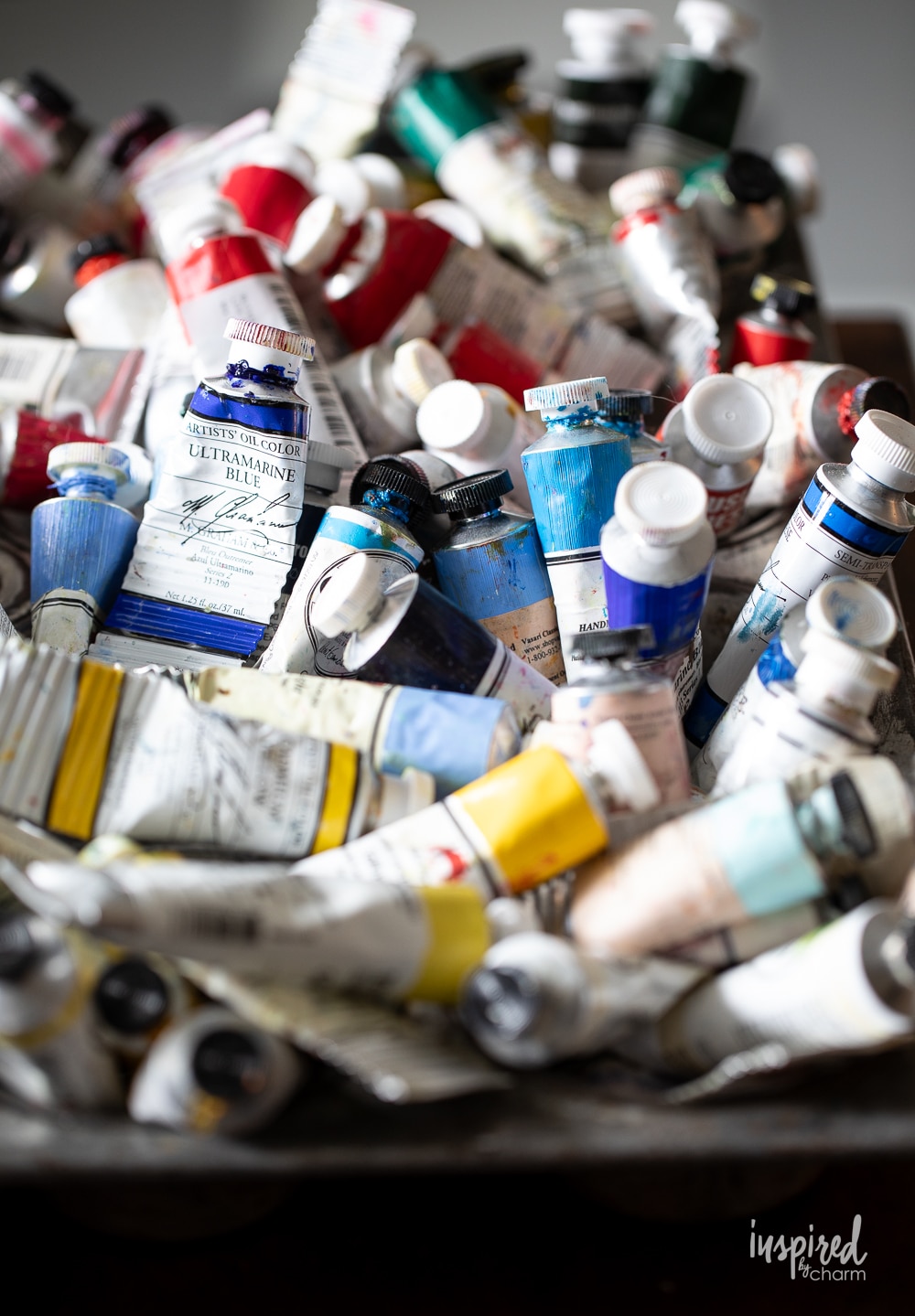
Simplify Your Toolkit
One of the joys of embarking on an artistic journey is the initial gathering of materials. Yet, when starting oil painting, I advocate for moderation. An abundance of colors and tools can be more overwhelming than beneficial. Beginning with a modest selection allows you to become intimately familiar with each element, paving the way for mastery and, eventually, thoughtful expansion.
Economically, this approach means your budget can accommodate higher quality paints and brushes which can make learning to oil paint a bit easier. A limited palette—consisting of primary colors (red, yellow, and blue) and white—will not only suffice but also teach you invaluable lessons about color theory and mixing.
If you are curious about my favorite oil painting supplies, I have put together a separate post with all of my essential oil painting supplies. (You can also find most of them in my Amazon Storefront.)
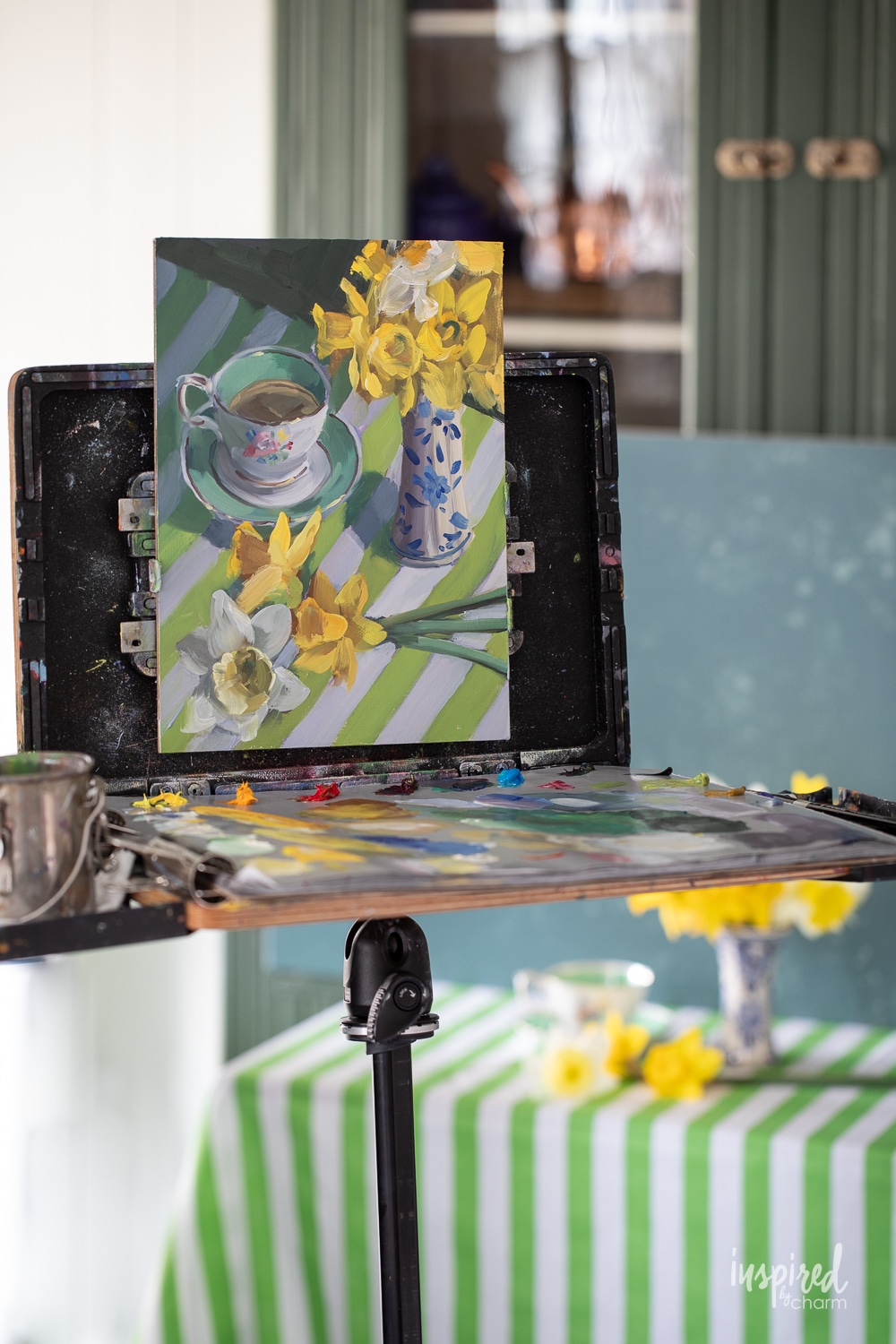
Be Selective About Instruction
The allure of learning from multiple admired artists is strong, yet it can lead to confusion and overwhelm. Early on, I experienced this when I attempted to learn various techniques and perspectives simultaneously. My advice is to start with one instructor whose approach and artwork style resonates with you. Once you’ve gained confidence, you can then explore other artists and how they like to paint.
You’ll find that each artist is different and some teachings will even contradict each other. That’s why it can be confusing. I’ve learned to take little pieces from each artist that I enjoy and include them in my practice.
I’ve shared a few resources at this end of this post for art instruction. I also have an entire blog post dedicated to my favorite online art courses.
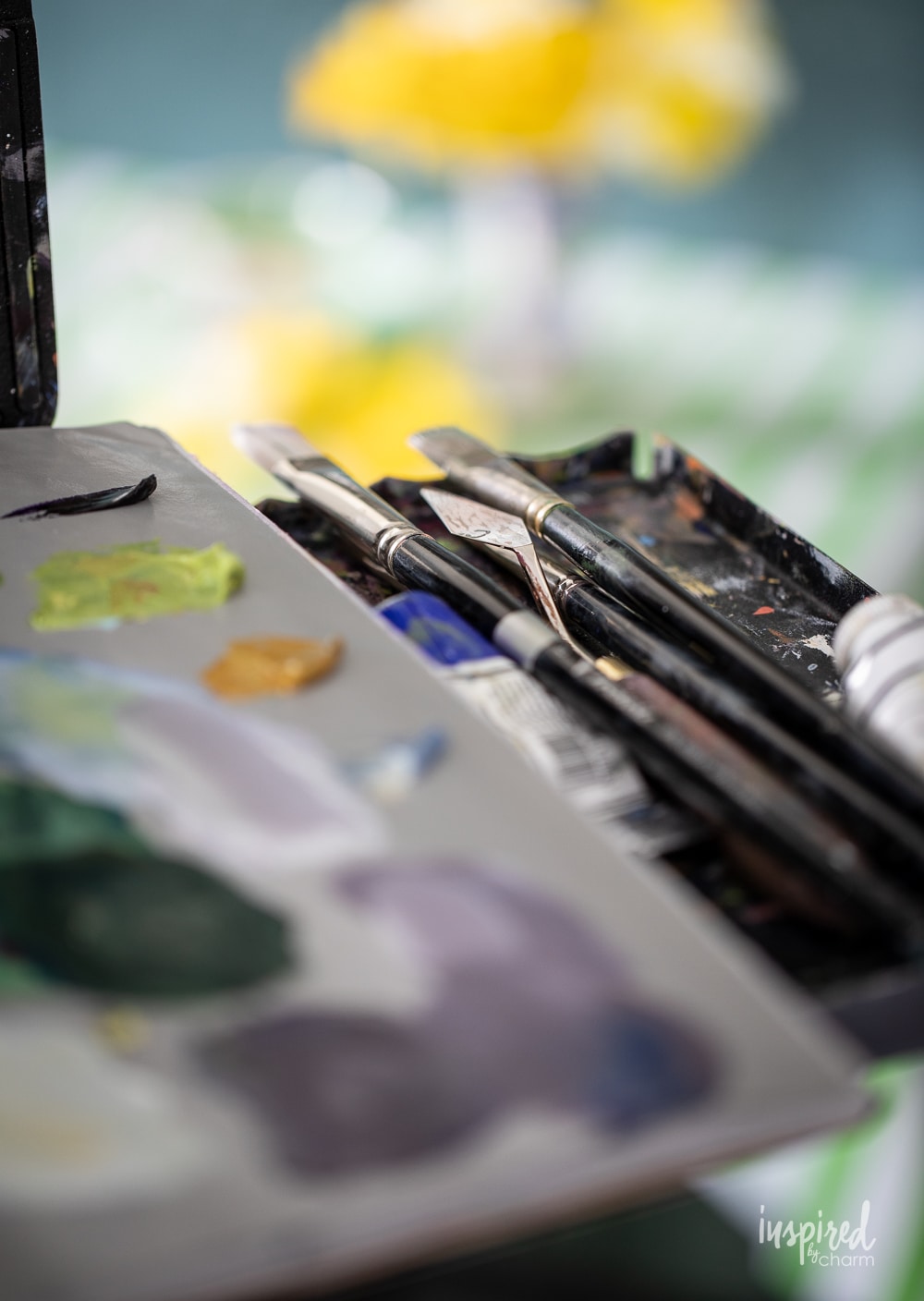
Practice with Purpose
The myth of innate artistic talent does a disservice to the discipline and practice behind artistry. People tend to think that people are just born artists. While some people might be more artistically inclined, becoming a good artist takes practice. We wouldn’t expect anyone to be able to sit down and play the piano on their first try, so why do we expect this from an artist?
Progress in oil painting, like any skill, requires dedication. Accept that your initial works may not meet your expectations and instead, view each piece as a step toward your development. One technique I love is painting the same subject over and over again. Focusing on a single subject, such as an apple or a flower, and repeatedly painting it can accelerate your learning process by allowing you to refine your technique incrementally.
Even several years in, I’m doing the same exercise as we speak. I’ve set up a still life of daffodils and I’m painting it in all the techniques and styles I know to see which feels most like me. It’s been incredibly helpful.

💌 SAVE THIS POST / RECIPE!
Learn to Draw
For those aspiring to bring their subjects to life with a semblance of realism, honing your drawing skills is indispensable. This revelation might seem self-evident to some, yet it was a profound insight for me. Admiring the works of many of my favorite artists, I’ve often glimpsed their sketchbooks or preliminary sketches which revealed a consistent truth: they can all draw well!
Fortunately, drawing is something easy to practice. The only tools you need are a pencil or pen and a sheet of paper. Begin by selecting everyday objects around you as subjects—drawing from life is most beneficial—and replicate them. Then, do it again. And again. The repetition is where the magic of improvement lies.
If the thought, “But, I can’t even draw a stick figure,” lingers in your mind, that’s okay! Remember what I stated earlier… No artist is born with a pencil in their hand and fully equipped with drawing prowess. It’s a skill forged through persistent practice. Commit to drawing the same subject daily for 30 days. I assure you, the progress from Day 1 to Day 30 will be noticeable. You may even surprise yourself. This exercise isn’t just about enhancing your ability to render forms accurately; it’s also about developing a deeper understanding of observation, proportion, and perspective—skills that will significantly elevate your painting.
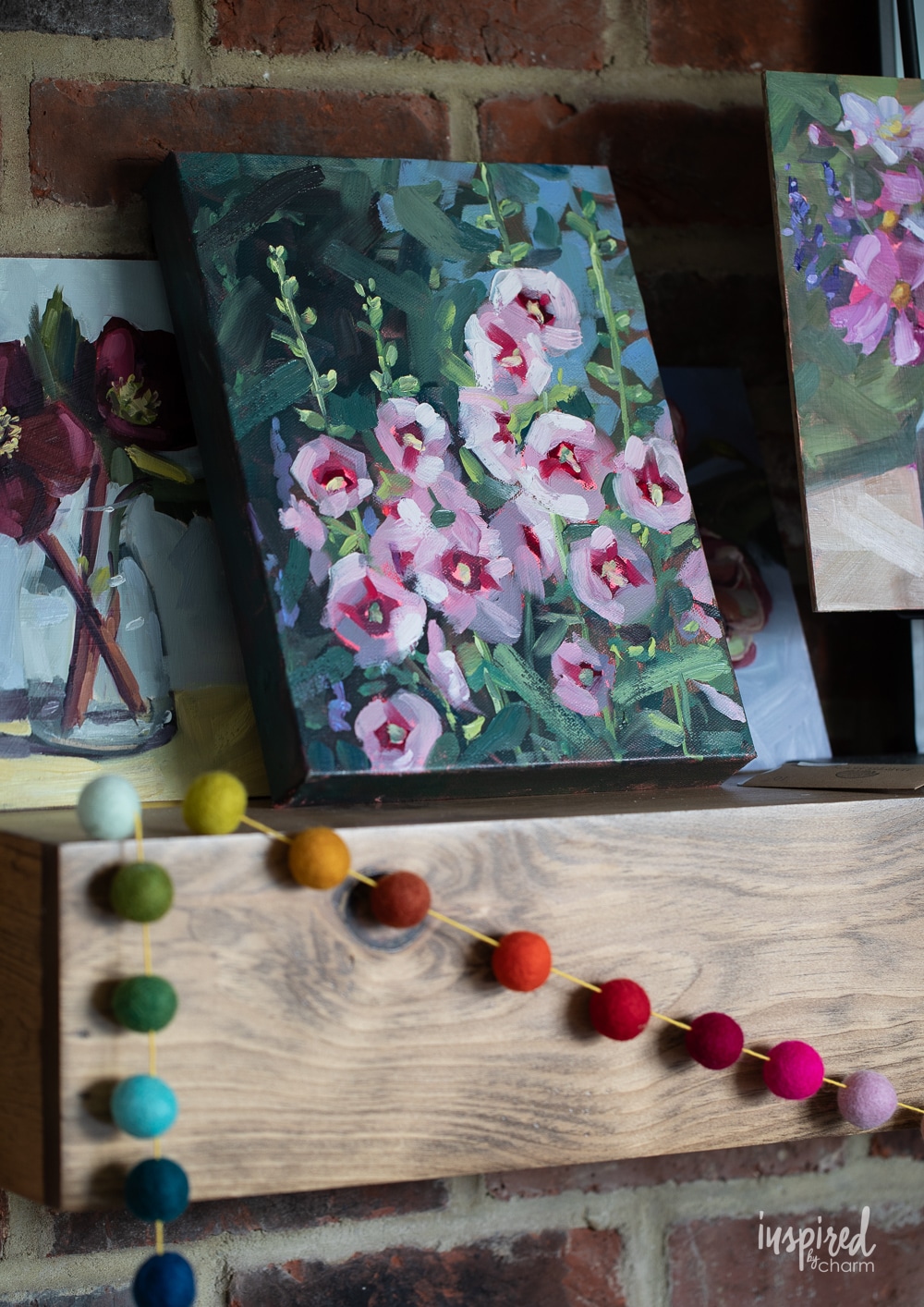
Seek Constructive Feedback
Growth in art is significantly enhanced by receiving thoughtful critiques. The most beneficial workshops and classes I’ve participated in included opportunities for feedback. Engaging with a community of artists, either locally or online can provide you with different perspectives that refine your understanding and technique.
Be very careful and selective with whom you show your art, especially your first pieces. As much as you may love them, family and friends might not be the best option for offering critiques. They may just tell you that everything is perfect or they may unintentionally say something unkind that will kill your confidence. Instead, consult a fellow artist friend, or join an online group where sharing and constructive comments are encouraged.
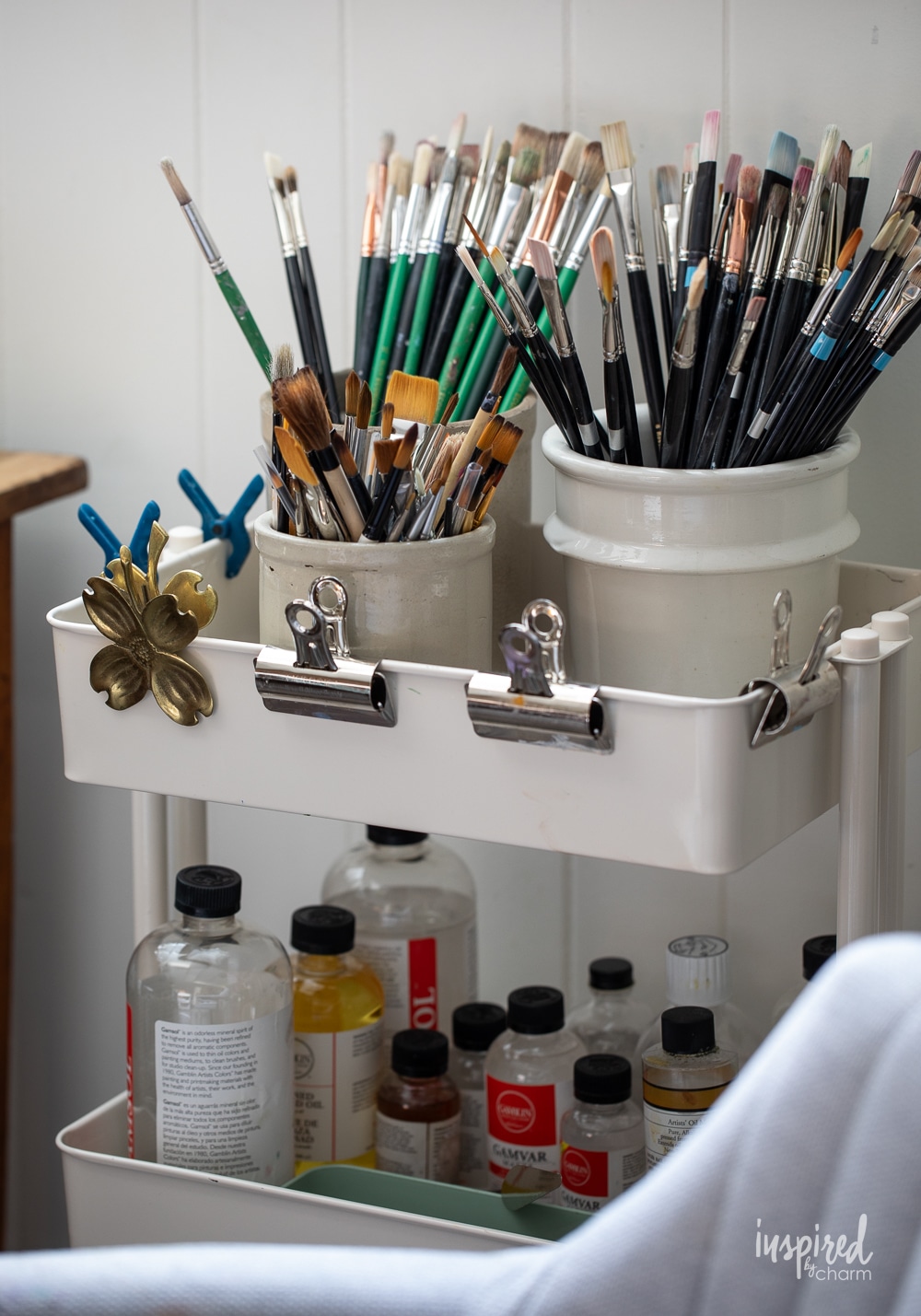
Embrace the Beginning… Just start.
Lastly, the most crucial step is to simply start. Waiting for the perfect moment or the ideal set of tools can hinder your journey before it even begins. The act of beginning is often the most challenging hurdle, but once you commence, you’ll find the process rewarding and invigorating.
I’ve also found over the years that ‘not having the time” is often a big hurdle for folks. I get it. I feel like I never have enough time. But, if you’re serious about oil painting and growing in your skill, you need to make the time and keep it (even if it’s just one hour a week or getting up 30 minutes earlier every day). I don’t know about you, but I waste an unnecessary amount of time scrolling on my phone. Over the past couple of months, I’ve forced myself to put down the phone and get to work. Just through this one simple act, I’ve opened up so much time to paint.
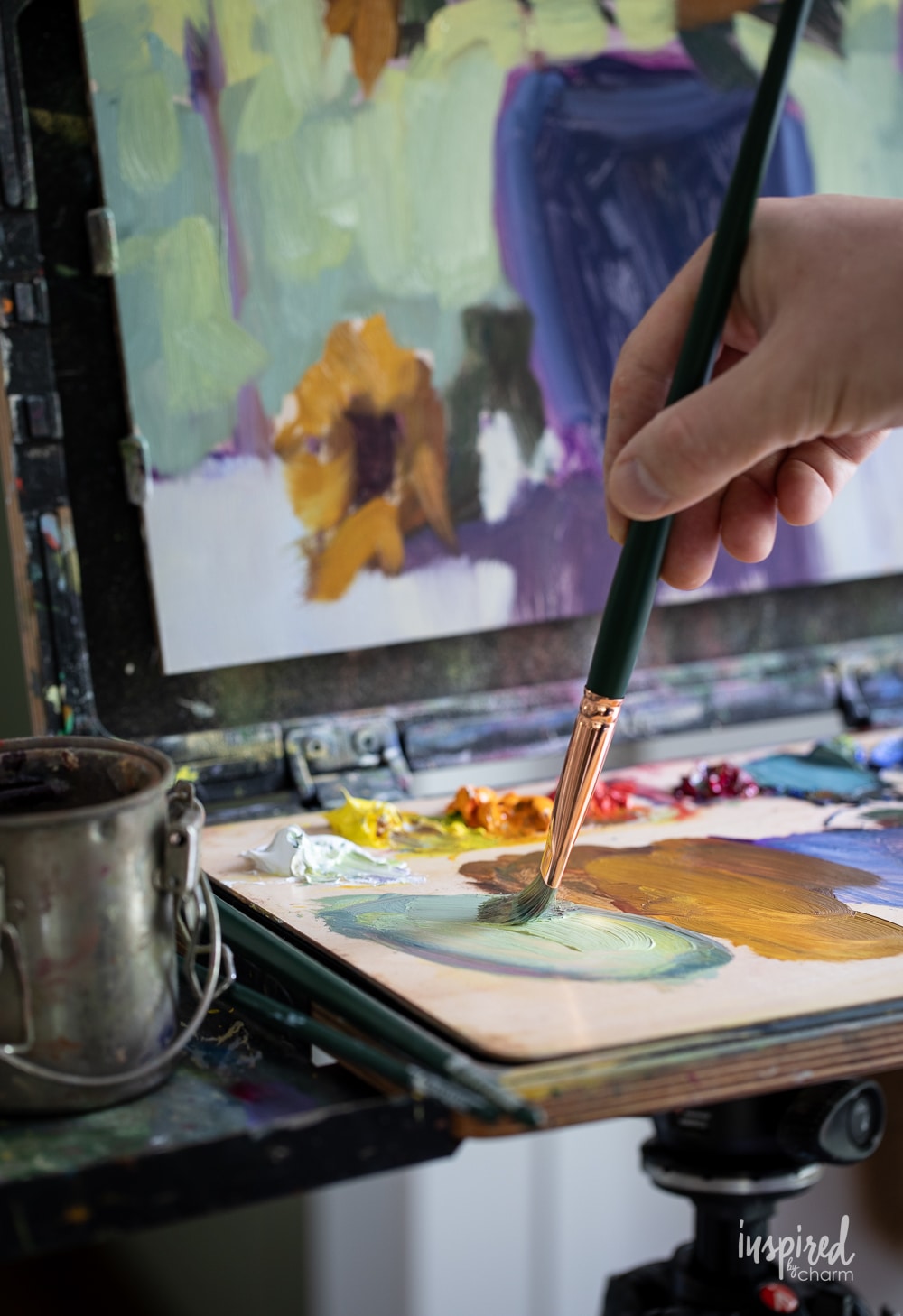
Resources for Getting Started
I have previously shared a post with all of my favorite Online Art Courses and the best places to learn art (not just oil painting). It’s a great place to start! It’s a wealth of resources.
Beyond that, here is a more refined list to help you get started.
- Paint Coach on YouTube: For a dive into oil painting, Chris Fornatero offers an excellent free resource. Regardless of your style preference, his guidance on fundamental principles is invaluable.
- Local Art Schools and Workshops: While online resources are abundant, nothing compares to the experience of live instruction and community. Utilize social platforms, search engines, or local networks to find opportunities near you.
- Instagram and Pinterest: These platforms are ideal for creating a visual inspiration board, discovering new artists, and sharing your creations with a global audience.
- “Alla Prima II” by Richard Schmid: It’s a comprehensive guide that delves into the techniques and philosophies of oil painting. It is revered by many as an essential tome for both novices and experienced painters.
- “Vibrant Oils” by Haidee-Jo Summers: Haidee-Jo might be my all-time favorite painter. This book is a treasure trove of advice for capturing the vivacity of the world around you in oils with Summers sharing her approach to creating lively, dynamic works.
- “Plein Air Techniques for Artists” by Aimee Erickson: Erickson offers practical advice and techniques for artists looking to take their easel outdoors, covering everything from selecting your scene to the nuances of natural light.
- “Daily Painting” by Carol Marine: Marine advocates for the practice of creating small daily paintings as a way to improve skills rapidly. This book is packed with insights on technique, productivity, and the joy of oil painting.

And that’s all I have to share with you today in this guide on How to Get Started with Oil Painting! Armed with knowledge, resources, and perhaps a newfound sense of excitement, I hope you’re feeling a greater sense of readiness and are inspired to begin your artistic journey. Remember, everyone’s path to becoming an artist varies. The beauty of art lies in the exploration, the learning, and the joy of seeing the world through your unique lens.
Embrace the journey and enjoy every step along the way. Here’s to the start of something beautiful—your adventure in the art of oil painting.

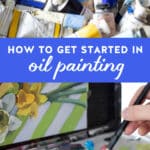
Michael – thanks for ALL of your inspirational posts. Love them all from decor, decorating, cooking, parties, etc. Always great information! Wondering if you have any tips/tricks/hacks for taking a regular print and making it look like an oil painting. I have seen it done and used to have it done on several iconic Christmas prints (from Christmas bags, wrapping paper, prints, etc). If you have any insights, would appreciate. Thanks! Penny
I think there are various ways to do this, but I’m not familiar with them. It’s not necessarily something I would do, so I’m not certain of all or the proper methods.
xo Michael
So much good information! I’m guilty of saying I don’t have time, or talent. Truth is, I’m afraid of failing. There I said it. I’ve loved watching you on your art journey — thank you for sharing it with us!
I totally understand that. I fear failure almost every time I show up. Honestly, I haven’t painted in a couple weeks for that very reason. But, I try to remember that showing up and failing is better than not showing up at all. And if it’s something you really want and continue to show up for, you’ll only get better and better.
xo Michael